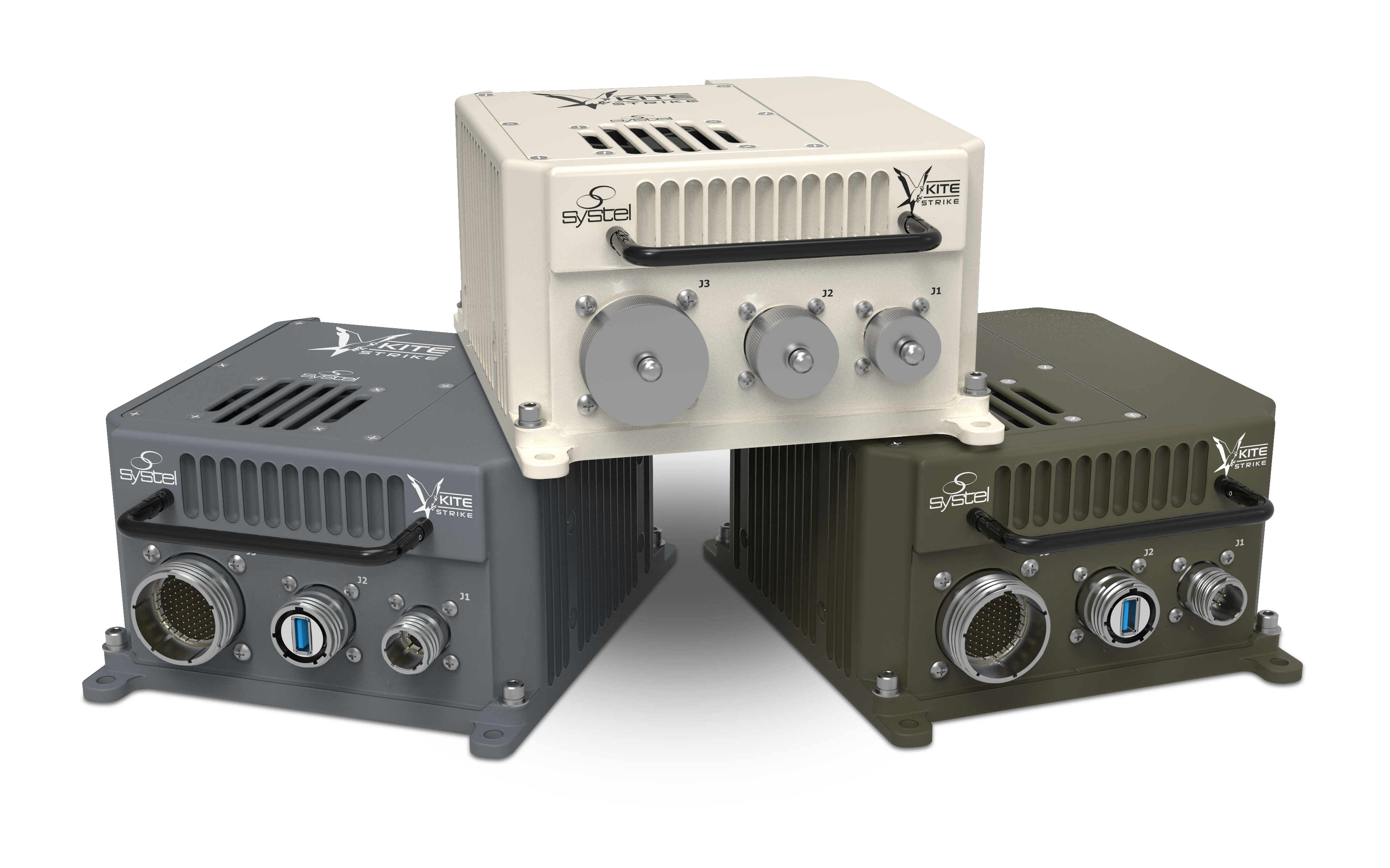
Photo courtesy of Systel.
Here’s the problem – there is a massive proliferation of HD sensors in the modern battlespace, creating an enormous amount of “Big Data.” Data is collected at numerous ingest points and streamed to processing nodes, providing the ability to act in real-time. The data can’t be sent to the cloud because of latency, bandwidth, and security considerations; it must be processed at the point of ingest or in very close proximity, i.e. at the edge. This typically means the computing must be done in a vehicle or on a platform subject to extremely harsh environmental conditions and with stringent space and power constraints. To summarize the problem – how do you reliably field the latest OSA supported COTS/commercial technologies in battlefield conditions to successfully provide AI at the edge necessary to win the future fight?
In a JADC2 environment, actionable data is paramount and ultra-rapid decisions (measured in milliseconds) are critical to the success of the entire ecosystem. The JADC2 ecosystem is founded on continuously ingesting, processing, analyzing, and disseminating oceans of information. At the Association of the United States Army’s 2021 annual meeting and exposition, Army Secretary Christine Wormuth said, “Make no mistake – data and software will be as important as ammunition on the future battlefield.”
JADC2 envisions a unified network connecting sensors to shooters across all domains, commands, and services to pass actionable data unimpeded without stovepipes. Successfully harnessing and exploiting that data requires AI and ML to augment human capacities. In fact, JADC2 is predicated on the power of computational hardware and employing AI and ML capabilities to achieve decision dominance.
Leveraging AI and ML, enabled by advanced computing systems, is the key to reduce the cognitive burden on the warfighter. AI teammates, in the form of data-crunching engines and autonomous vehicles, are a risk-reduction and force-protection multiplier, helping our Soldiers win the fight. As Brig. Gen. John Olsen recently stated, “Artificial intelligence and machine learning are absolutely essential enablers to make us able to react, and respond, and again, make sense of the information then act upon it.”
Systel engineers and manufactures rugged computers, and over the past 33 years has delivered thousands of systems to defense and commercial customers worldwide. Systel’s primary product focus has been rackmount servers and workstations. However, recent advances in commercial technologies along with next-gen mission requirements and a focus on attacking Big Data in a JADC2 environment have led the company to develop its Strike™ family of single LRU embedded computers to help solve emerging combat technology problem sets.
Operating in a contested environment with restricted bandwidth and degraded communications makes the tactical use of cloud-based computing and AI a liability. Computational processing capability must reside “on-prem” to ensure the low latency and near real-time speed demanded of AI-based applications. Robust tactical level In-Vehicle Networks (IVN), where the majority of AI edge processing is conducted, is vital to the success of the overarching network. This edge-AI capability must reside on edge-computing hardware; Systel’s Strike™ systems form the tactical backbone on which the edge-AI stack sits.
Systel’s Strike™ small-form-factor (SFF) embedded product family consists of several product lines offering a diverse mix of performance, capabilities, and SWaP. All Strike™ products are built on COTS/MCOTAI open standard architectures and are aligned to MOSA, CMOA, and SAVE, and GCIA standards, supporting GCIA’s Single-Board-Computer architecture for both Common Compute and Crew Station Compute. All Strike™ products are TRL9, with hundreds of systems deployed. Here is a brief overview of the Strike™ product lines:
Kite-Strike™: Kite-Strike is an edge-AI and computer vision system. Integrating the NVIDIA Jetson AGX Xavier system-on-module (SOM), Kite-Strike enables real-time inferencing and provides centralized sensor ingest and data fusion support. Kite-Strike successfully hosted and demonstrated Aided Target Recognition (AiTR) AI capabilities to the U.S. Army at a Project Convergence 2021 (PC21) event, collecting data from a LWIR HD uncooled sensor for over two days of day and night operational scenarios.
Hawk-Strike®: The Hawk-Strike product line features single LRU multi-mission systems for complete sensor ingest, processing, networking, and storage functions. Offering the latest Intel Xeon embedded CPUs and NVIDIA embedded GPUs, Hawk-Strike systems provide high performance, robust expansion, and dense I/O.
Raven-Strike®: The Raven-Strike product line features server-class computing in a fully rugged and sealed system. Featuring massive performance capabilities with the latest Intel Xeon SP CPUs and NVIDIA Ampere GPUs, Raven-Strike systems offer near unlimited configurability and expansion options including high-bandwidth networking and high-capacity and secure storage.
A recent Breaking Defense interview with Kratos discussed the company’s “disruptive approach to defense contracting” by bringing products not PowerPoints to customers. Systel follows a similar model with its Strike™ and like product lines, identifying problem spaces and engaging in new product innovation to bring the right solutions to market, with COTS technologies and proven capabilities. Systel’s approach provides significant risk reduction to our customers and faster time to deployment, paramount in today’s highly volatile and uncertain supply chain environment.
Systel uses agile and lean methodologies in our new product development and innovation funnels, ensuring that we are not designing AI enabling technology systems in a vacuum but rather in spiral development fashion with constant communication with customers and key technology partners like Intel and NVIDIA. Kite-Strike is a great example of this methodology. Kite-Strike has gone through several iterations and improvement cycles since product launch in late 2020, with direct voice of the customer and customer feedback and touchpoints as the driving mechanisms.
Scalable, modular hardware platforms based on open architectures are critical to successfully meet the next-gen mission demands mandated by emerging doctrines. Edge-AI and ML capabilities in an open-standards driven environment is at the foundation of JADC2, and the keystone of successful edge-deployed AI is the rugged computer hardware infrastructure.
How do you solve the problem of Big Data and AI-driven warfare? Systel certainly doesn’t presume to have all of the answers or provide all of the solutions; however, a critical piece of the technology stack is the rugged computing hardware backbone, and Systel’s Strike™ family of mission computers meets that challenge head-on.























